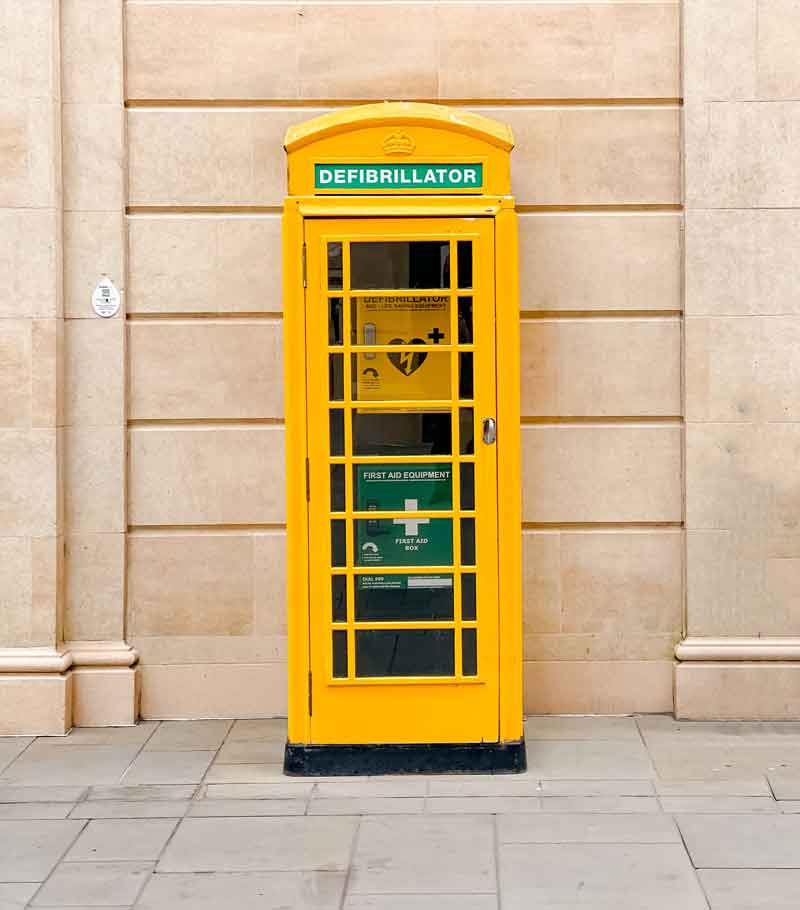Checking a defibrillator for readiness isn’t the most complex task in the world. However, it is one you want to get right. Using a physical checklist, or its digital equivalent, will make checks repeatable, reliable and auditable. Regular check will mean you’re always providing a serviceable and rescue-ready to the community around you.

When it comes to cardiac arrest, time is of the essence and every second counts. That's likely why you’re a guardian, why you believe a working defibrillator is important, and why our mission is to ensure everyone is within three minutes of a serviceable device. Without regular checks, your AED may not be rescue-ready when needed the most, and the consequences could be dire. After reading this article you’ll understand the basics of defibrillator checking and why each item is important.
To ensure that your defibrillator is always rescue-ready, it’s recommended by both manufacturers and the British Heart Foundation that regular checks are performed and logged. Whilst different manufacturers and retailers might have specific instructions to follow or suggested routines, the core of them all remains the same. Check your defibrillator regularly and record the details.
The regular checking of these items is almost always logged. For the pads and battery, the dates are typically recorded on installation and visually confirmed as part of each check.
Is the self-test passing? Check that the device's self-tests are working and reporting as successful. This ensures that the AED is functioning properly and the battery is charging correctly.
Are the accessories present? Check that the common accessories - razor, scissors, and face shield - are present. These accessories are essential for preparing the patient for defibrillation and ensuring that the defib can be used safely by a rescuer.
Have the pads expired? Check that the pads haven't expired or been used recently. Defibrillator pads have a limited shelf life, so it's important to ensure they're still in date. Expired pads may not provide the necessary level of shock delivery, and it’s not unheard of for them to be swapped between devices.
Has the battery expired? AED batteries have a limited life span, and an expired battery may not provide enough power for defibrillation. Battery lifespans can be as long as ten years, but it’s a good idea to confirm the date on the battery matches the one logged.
Some aspects of an installation don’t affect the core functioning of a defibrillator but are wise to confirm with each check. These items don’t affect the readiness directly, but are critical in a rescue situation. Whilst you may not record a successful check of these specific items, any issues should be raised with the appropriate people in your network.
Is there any damage? Check for signs of damage to the device and the cabinet. Damage to either can affect a defibrillator's functioning, potentially rendering it unusable in an emergency.
Does the door lock work? If your AED has a door lock, check that it functions well. A door lock helps ensure the AED remains secure and protected from damage but needs to provide quick access in a moment of need.
Is the signage clear and readable? Check that the signage is clean and readable and that any critical information is clearly visible. If the signs are faded or illegible, it can lead to confusion and potentially life-threatening mistakes. Clear signage helps to ensure that the AED can be located quickly in an emergency.
Does the external light work? Check that any external lights work. External lights can help to ensure that the AED is visible in low-light conditions, assisting the ambulance service in directing rescuers to the defibrillator.
Keeping track of your defibrillator's condition is essential to ensure perfect performance when it's needed the most. Regular checks help you stay informed about the status of electrode pads, any usage or faults, and the battery's lifespan. It's crucial to establish a routine for checking your defibrillator to guarantee its readiness.
Regular checks can be recorded in a variety of ways. You might choose to record critical items paper, as an entry per check into a spreadsheet or by using a dedicated defibrillator management system such as Defib Ready. Defib Ready has been designed by guardians and with guardians to make defibrillator checks as fast and simple as possible.
Regular checks are essential for ensuring that defibrillators are rescue-ready in a sudden cardiac arrest emergency. By performing regular checks and logging them, guardians can ensure that their defib is functioning correctly and the necessary accessories are present, giving a rescuer the best chance possible to save a life.
The core of defibrillator checks is consistent across manufacturers, but it's important to follow specific instructions to guarantee readiness. It's crucial to record checks either manually, in a spreadsheet or by using a dedicated defibrillator management system like Defib Ready, to ensure that your guardian community is informed about the status of the device.